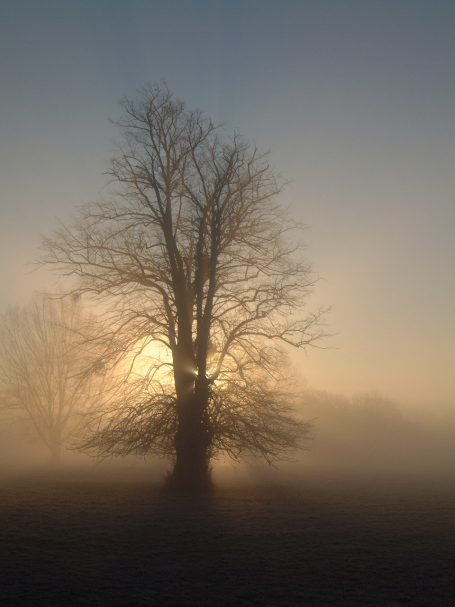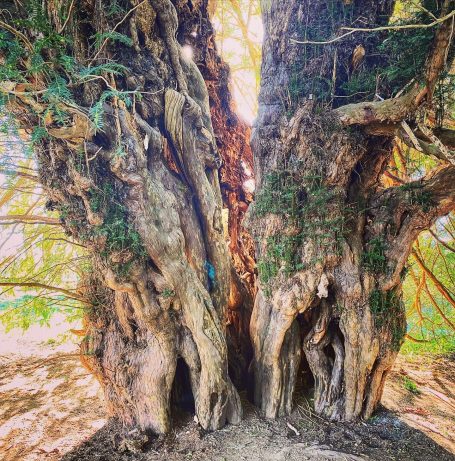The Ankerwycke Estate
Ankerwycke, near Wraysbury, Berkshire, is a rural country estate owned by the National Trust. It is a fascinating property, important for its wildlife, archaeology and notable trees. The following pages have been compiled to aid visitors to learn about its’ history, and facilitate enjoyment of Ankerwycke’s amazing ‘Spirit of Place’ when visiting.
The history of the site is truly spectacular: containing evidence of occupation back to the Bronze Age, significant Medieval archaeology relating to the Priory of St Mary Magdalen; as well as two mansions - one Tudor, one Georgian - both leaving significant legacies in terms of archaeology and changes to the landscape.
A Magical Spirit of Place
Please explore the following pages to learn more about Ankerwycke, its historical development and archaeology.
Archaeology
Explore details of excavations at Ankerwycke, as well as learn about the earthworks and development of the landscape.
The Ankerwycke Yew
The 36ft diameter Yew is a remarkable ancient tree. Learn about its majesty, folk law and significance.
Brief History
At the end of the last Ice Age 10,000 years ago, the Thames flowed through the area - not as one river, but as a series of braided channels with gravel terraces and islands. Overtime the Thames' flow reduced allowing exploitation of the river valley. The island at Ankerwycke may have held regional significance during its early history, and by the late Saxon period a Hermit, or Anchorite, occupied the site.
In the 12th Century, Lord of the Manor, Gilbert de Montfichet, founded a Benedictine nunnery here, and work began altering the landscape and water flow to better supply the priory's kitchens, latrines and fishponds. Bequests of land quickly followed, including 88 acres of land adjacent to the priory, tenements in London, as well as the rights of fishing in the Thames.
By 1400 the nunnery owned over 960 acres of lands, yet styled themselves "The poor nuns of Ankerwycke". Also at this time, improvements were made to the buildings, with impressive chalk-built structures replacing timber ones around the cloister.
After the Dissolution, a mansion was erected by Sir Thomas Smith – a Tudor intellect and Secretary of State for both King Edward VI and Queen Elizabeth I. His property incorporated the medieval walls of the south and west ranges that formerly comprised the refectory and kitchens of the nunnery. He also created an elevated garden terrace to the south of his house, laid out with geometric parterres of box hedging, pathways and renaissance statues.
Smith’s mansion survived mostly unaltered until 1805, when the Estate was purchased by John Blagrove. He built a new house further away from the river, commanding views across his newly created parkland towards Windsor Castle. The Tudor mansion was mostly pulled down, leaving the medieval chalk ruins as part of a larger pleasure ground. A new farm was also built, either by Blagrove, or the Harcourts who also created Magna Carta House.
The Estate was acquired by Buckinghamshire County Council to protect the land from development, prior to modern Green Belt Laws. However by this time, the riverside properties on Magna Carta Lane had been built.
Two fires in the last century sealed the fate of the Georgian mansion, and it was eventually demolished in the 1990s. The National Trust acquired much of the estate in 1998, due to the increasing threat of development of the land for housing, and to safeguard the river backdrop to Runnymede.
Today, the estate is primarily managed under Countryside Stewardship to maintain and enhance the variety of habitats found here, and the National Trust actively undertake conservation and restoration works to preserve this important site.
Visiting Ankerwycke
Ankerwycke Estate is owned by the National Trust. There is a very small car park on site, so please be respectful if it is busy, and consider visiting at quieter times. See National Trust Runnymede Website for further details.
- Mon – Sun
- 24h
Contact us
How to Find Ankerwycke Estate:
Driving: Magna Carta Lane, Wraysbury TW19 5AG
What Three Words: xyz
Grid Reference :
© Copyright. All rights reserved.
We need your consent to load the translations
We use a third-party service to translate the website content that may collect data about your activity. Please review the details in the privacy policy and accept the service to view the translations.






